Immunopeptidomics using the ZenoTOF 7600 system
Mohammadreza Dorvash1, Kirti Pandey1, Sri Ramarathinam1, Patricia Illing1, Patrick Pribil2 and Anthony W. Purcell1
1 Monash University, Australia; 2 SCIEX, Canada
Abstract
This technical note describes the application of the ZenoTOF 7600 system for the characterization of non-tryptic peptides for immunopeptidomics research. Using data-dependent acquisition (DDA) and an elastase digest of HeLa cell line protein extract to model a complex non-tryptic sample, sensitivity improvements and an increase in unbiased peptide identifications were observed through Zeno trap pulsing in MS/MS relative to previous-generation instrumentation. The high sensitivity of the ZenoTOF 7600 system was further demonstrated using DDA to identify >2300 HLA-A2-bound peptides from a limited amount (approximately 10 million) of cells. The choice of either collision-induced dissociation (CID) or electron activated dissociation (EAD) MS/MS fragmentation produced complementary structural information for unambiguous sequence assignment and the characterization of post-translational modifications (PTMs) on these peptides.
Figure 1. Over 2300 HLA-A2-bound 9mer peptides were identified using the ZenoTOF 7600 system. Data was analyzed using PEAKS Online 11 software and the identified nonamer peptides were used to generate a characteristic consensus binding motif dominated by leucine at position 2 and leucine/valine/isoleucine at position 9.
Key features of immunopeptide characterization using the SCIEX ZenoTOF 7600 system
- Flexibility and versatility for the characterization of immunopeptides: Generic methods for CID- or EAD-based MS/MS fragmentation provide complementary structural information on non-tryptic peptides, particularly those with post-translational modifications (PTMs). EAD fragmentation generates fragment ions that retain labile PTMs, typically lost during CID, allowing greater structural insight into modified peptides. EAD also works well for low charge-state peptides which fragment poorly by similar fragmentation techniques such as ETD
- Enhanced peptide identification using DDA: The speed and versatility of the ZenoTOF 7600 system make it an ideal platform for the characterization of peptides in complex non-tryptic and immunopeptidomic samples
- Improved MS/MS sensitivity: Zeno trap pulsing on the ZenoTOF 7600 system increases peptide identifications several-fold, without introducing bias in the populations of peptides identified or in the MS/MS spectral profiles
- Determination of HLA-binding peptide consensus sequence: >2300 HLA-binding nonamer peptides were identified from isolates of 10 million monoallelic C1R.A2 cells using nanoflow LC and DDA, with the bound peptides displaying the expected length distribution and preferential amino acids (anchor residues) at the expected positions (P2, P9)
Introduction
Immunopeptidomics is the study of peptide antigens that are naturally processed intracellularly and presented on the cell surface for immune recognition. These peptide antigens are present on the cell surface in complex with molecules encoded by the major histocompatibility complex (MHC). There are two classes of MHC molecules – MHC class I molecules bind to short peptides (typically 8-11 amino acids in length) derived from intracellular antigens, including many viral and tumor-specific antigens, and MHC class II molecules that are present on antigen-presenting cells (e.g. dendritic cells, macrophages and B-cells). HLA-A2 is a prevalent HLA allotype in Caucasians representing up to 40% of the population. Understanding the composition and abundance of individual peptide antigens within the MHC class I immunopeptidome is vital to unlocking antigen-specific therapies for cancer and infectious diseases, and therefore robust and sensitive immunopeptidomic workflows are needed. Traditionally, immunopeptidomics has required large amounts of starting material (up to 100 billion cells). However, sample requirements have dropped due to advances in mass spectrometry instrument sensitivity in recent years.
In this work, the ZenoTOF 7600 system was demonstrated to be ideally suited for the general analysis of complex non-tryptic peptides using an elastase digest of HeLa protein extract. Furthermore, the analysis of HLA-A2-bound peptides using the ZenoTOF 7600 system was explored using both nanoflow and microflow liquid chromatography (LC), with both CID and EAD MS/MS fragmentation.
Methods
Sample preparation: HeLa elastase digest was prepared by digesting HeLa cell lysate with elastase (Promega). The digest was then desalted and quantified by UV spectrophotometry. C1R.A2 cells (a “monoallelic” cell line engineered to express HLA-A*02:01, a prominent HLA allele in most global populations) were cultured and pellets of 50 million cells snap frozen in liquid nitrogen. HLA-A2 complexes were captured by affinity chromatography as previously described.1 In each experiment, 2 µL of reconstituted peptides (representative of approximately 10 million cells) was injected on-column.
Chromatography: LC-MS analyses with the ZenoTOF 7600 system were performed using a Waters Acquity M-Class UPLC system, while LC-MS analyses with the TripleTOF 6600 system were performed using an Eksigent nanoLC 425 system. Mobile phase A consisted of water with 0.1% formic acid and mobile phase B consisted of acetonitrile with 0.1% formic acid. Microflow LC was performed using a Phenomenex Kinetex XB-C18 column (0.3 mm x 150 mm) at a flow rate of 5 µL/min, with a 10- minute active gradient (20-minute total run time). Nanoflow LC was performed with an IonOpticks Aurora Elite SX column (75 µm x 15 cm), using gradient lengths and flow rates as indicated below.
Mass spectrometry (HeLa elastase digest analysis): HeLa elastase digest was analyzed using microflow LC on both the ZenoTOF 7600 and TripleTOF 6600 systems. Data were acquired using DDA in positive mode, with 250 ms accumulation times for the TOF-MS spectra (370-1250 m/z), and 100 ms accumulation times for MS/MS (60-1500 m/z). The top 15 precursor candidates per cycle, with charge state +2 to +5 and TOF-MS intensity >40 cps, were chosen for MS/MS.
Mass spectrometry (HLA peptide analysis): CID-based DDA was performed on the ZenoTOF 7600 system using nanoflow LC with 45-minute gradients (75-minute total run times) at a flow rate of 400 nL/min. DDA was done using 150 ms accumulation times for the TOF-MS spectra (400- 1500 m/z), and 20 ms accumulation times for MS/MS (100- 1800 m/z). The top 45 precursor candidates per cycle, with charge state +2 to +5 and TOF-MS intensity >100 cps, were chosen for MS/MS.
Optimization of EAD-based DDA for the analysis of HLA peptides on the ZenoTOF 7600 system was done using microflow LC. TOF-MS scans from 200-2000 m/z were acquired, and the top 15 precursors with charge state +1 to +5 and intensity >100 cps were chosen for MS/MS scans from 100-2000 m/z with accumulation times of 115 ms. Dynamic ETC was turned on, with collision energy set to 12 V, electron beam current set to 5500 nA, EAD RF set to 300 Da, and EAD reaction time set to 10 ms. Electron kinetic energy was ramped from 1 to 20 eV.
In another test to determine the effects of EAD reaction time, HLA-A2-bound peptides were analyzed with nanoflow LC using 20-minute gradients (60-minute total run times) at a flow rate of 300 nL/min. DDA methods included TOF-MS spectra acquired between 400-1500 m/z with accumulation times of 150 ms, and the top 45 precursors above 100 cps intensity and with charge states +1 to +5 were chosen for MS/MS. The MS/MS mass range was 100-1800 m/z. For EAD fragmentation, dynamic ETC was turned on, electron kinetic energy was set to 2 eV, collision energy was set to 12 V, and electron beam current was set to 2000 nA. The EAD reaction time was set to either 5 ms or 30 ms and the MS/MS accumulation time was adjusted accordingly to either 30 ms or 55 ms, respectively. A control CID-based DDA was performed using dynamic collision energy and 25 ms accumulation times.
Data processing: The .wiff files from DDA experiments were converted to mzML using msConvertGUI in ProteoWizard 3.0.22189 software with a vendor-specific peak-picking algorithm. Data were searched using PEAKS Online 11 software (Bioinformatics Solutions Inc.) using the UniProt reviewed human FASTA protein sequence database. Additionally, iRT peptides, bovine-sourced contaminants and IgG-binding protein A (P02976) from Staphylococcus aureus were included in the FASTA database, as cells were cultured in bovine serum and eluates may have been contaminated with non-specific fragments of S. aureus protein A during immunoprecipitation. A 5% false-discovery rate (FDR) at the peptide and protein level was used (see Table 1).
Table 1: Parameters for searching HLA peptide data using PEAKS Online 11 software.
Analysis of HeLa cell extract protein digests
The sensitivity of the ZenoTOF 7600 system for immunopeptide characterization was first determined using a well-characterized standard. HeLa elastase digest was analyzed, which contains non-tryptic peptides similar to those observed in immunopeptidomics. Comparisons were made to a previous generation instrument (SCIEX TripleTOF 6600 system) through injections of digest under microflow conditions using the same column and similar source configurations (Figure 2). Of note is that the same sample run on a similarly-configured TripleTOF 6600 system yielded significantly fewer peptide identifications (on average, approximately 1/3 of the identifications achieved on the ZenoTOF 7600 system).
Figure 2. A comparison of DDA analysis of HeLa elastase digest using the ZenoTOF 7600 and TripleTOF 6600 LC-MS systems operated with equivalent chromatographic parameters results in ~2.5 fold improvement in peptide identifications with matching input materials using the ZenoTOF 7600 system. Data is shown for triplicates at sample loads indicated on the X-axis. The mean and standard error of the mean are shown.
Length distribution of HLA-A2-bound peptides is unaffected by Zeno trap pulsing and conforms to expected length and consensus sequence binding motifs
In addition to benchmarking the ZenoTOF 7600 system using the HeLa elastase digest, the HLA-A2-bound peptides isolated from the equivalent of 10 million C1R.A2 monoallelic cells were also examined. More than 2300 peptides were identified using a 45-minute nanoflow gradient. The length distribution of peptides (Figure 3) and unbiased motif of the HLA peptides (Figure 1) were visualized using Gibbs Cluster 2.0 online software for peptides analyzed with Zeno trap pulsing either on or off. Zeno trap pulsing has previously been shown to typically increase MS/MS sensitivity for peptides by approximately 5- to 10-fold.2 These peptides demonstrated the expected nonamer preference and sequence motif for HLA-A2 ligands. CID MS/MS spectra for a low-abundance peptide (QLIPKLIFL) are shown in Figure 4. Significantly more noise was observed in the spectra for QLIPKLIFL when Zeno trap pulsing was not employed.
Figure 3. The length distribution of HLA-A2-bound peptides identified using DDA with and without Zeno trap pulsing in MS/MS on the ZenoTOF 7600 system. The average and standard error of the mean are indicated on the bars.
Figure 4. Example CID MS/MS spectra for a low-abundance HLA-A2-bound peptide QLIPKLIFL. The top mirror image shows MS/MS with Zeno trap pulsing and the bottom mirror image shows MS/MS without Zeno trap pulsing. Zeno trap pulsing results in a more complete b- and y-ion fragment series identified for this peptide
EAD fragmentation is tunable and extends sequence coverage of immunopeptides, particularly those with PTMs
The utility of EAD for providing additional sequence information of HLA-A2-bound immunopeptides was determined. A series of HLA-A2-bound peptides were selected and the influence of ramping the electron kinetic energy was examined. Electron kinetic energy was ramped from 1-20 eV and compared to CID fragmentation for the same peptide (Fig 5A). It was noted that the fragmentation of these peptides was adjustable, with increased sequence coverage obtained using EAD compared to the y-ion-dominated spectra observed with CID. Moreover, an analysis of a peptide that is more challenging to characterize, in this case the phosphorylated version of the same HLA-A2-bound peptide, showed further improvements in the acquisition of structurally informative fragment ions (Fig 5B). Such data highlight the potential for EAD-based MS/MS fragmentation to facilitate and corroborate HLA-A2-bound peptide identification. For peptides with labile PTMs such as phosphorylation, EAD can provide additional fragmentation information, resulting in improved sequence coverage and confidence in localizing the site of phosphorylation.3,4 Example CID and EAD MS/MS spectra for the unmodified and phosphorylated forms of the HLA-A2-bound peptide GLLGsPVRA are shown in Figure 6.
Overall, this technical note demonstrates the utility of the ZenoTOF 7600 system for immunopeptidomics analysis, providing excellent sensitivity from relatively small cellular inputs. The potential of EAD MS/MS fragmentation for further interrogation of HLA-bound peptide sequences is also highlighted, thereby positioning the ZenoTOF 7600 system as a novel and extremely versatile tool in the immunopeptidomics characterization arsenal.
Figure 5. Effect of ramping EAD electron kinetic energy (1-20 eV) on the proportion of fragment ions for a representative HLA-A2- bound peptide GLLGSPVRA from CDC25b/M-phase inducer phosphatase 2, either unmodified (A) or phosphorylated at the serine residue at position 5 (B). Fragment intensities are shown relative to the control CID spectra (green = y-ions, blue = b-ions, red = c-ions, and purple = z-ions).
Figure 6. The complementary fragmentation information of the phosphorylated peptide GLLGpSPVRA from CDC25b/M-phase inducer phosphatase 2 using fragmentation with either EAD (top) or CID (bottom). Note that the precursor ion has been removed from both spectra.
Conclusion
- Using Zeno trap pulsing and DDA on the ZenoTOF 7600 system, approximately 2.5-fold more peptides could be identified from similar on-column loads of HeLa lysate elastase digests than on the TripleTOF 6600 system under similar conditions and loadings
- Using 45-minute nanoflow gradients and DDA, >2300 HLA-A2-binding peptides could be identified from 10 million monoallelic C1R.A2 cells with the ZenoTOF 7600 system, with the expected consensus sequence for the nonamer HLA-binding motif
- EAD MS/MS fragmentation provides complementary information to CID and increases the confidence of peptide sequence assignment as well as the localization of labile PTMs
References
- Purcell, A.W., Ramarathinam, S. H., and Ternette, N. (2019). Mass spectrometry-based identification of MHCbound peptides for immunopeptidomics. Nature Protocols 14:1687-1707.
- Over 40% more proteins identified using Zeno MS/MS. SCIEX technical note, RUO-MKT-02-13286-A.
- Tunable electron activated dissociation (EAD) MS/MS to preserve particularly labile post-translational modifications. SCIEX technical note, RUO-MKT-02- 13006-B.
- Analysis of post-translational modifications using fast electron-activated dissociation (EAD). SCIEX technical note, RUO-MKT-02-14795-A.
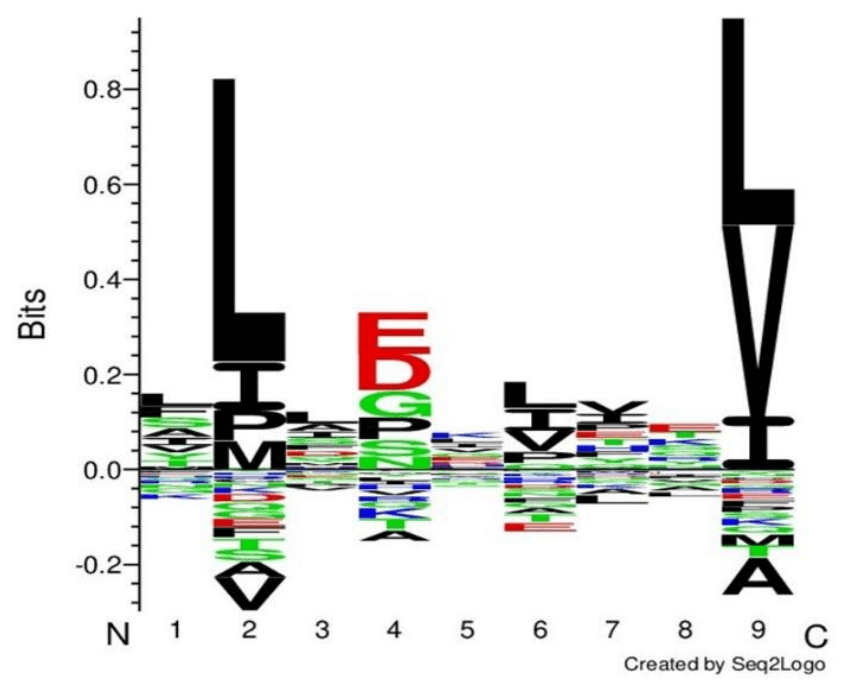 Click to enlarge
Click to enlarge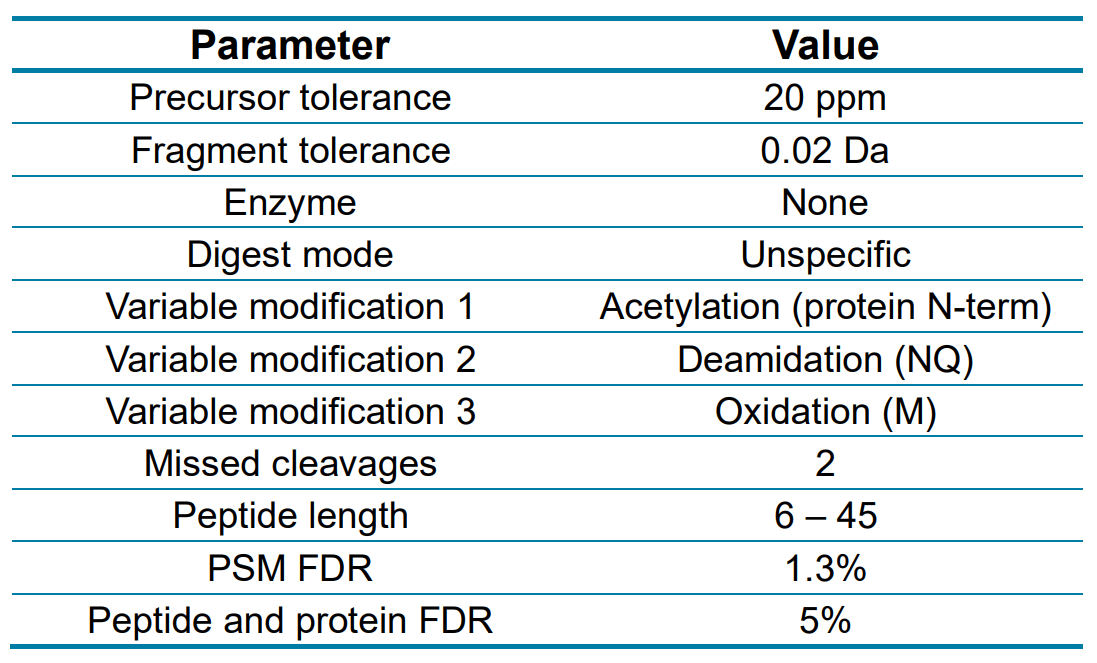 Click to enlarge
Click to enlarge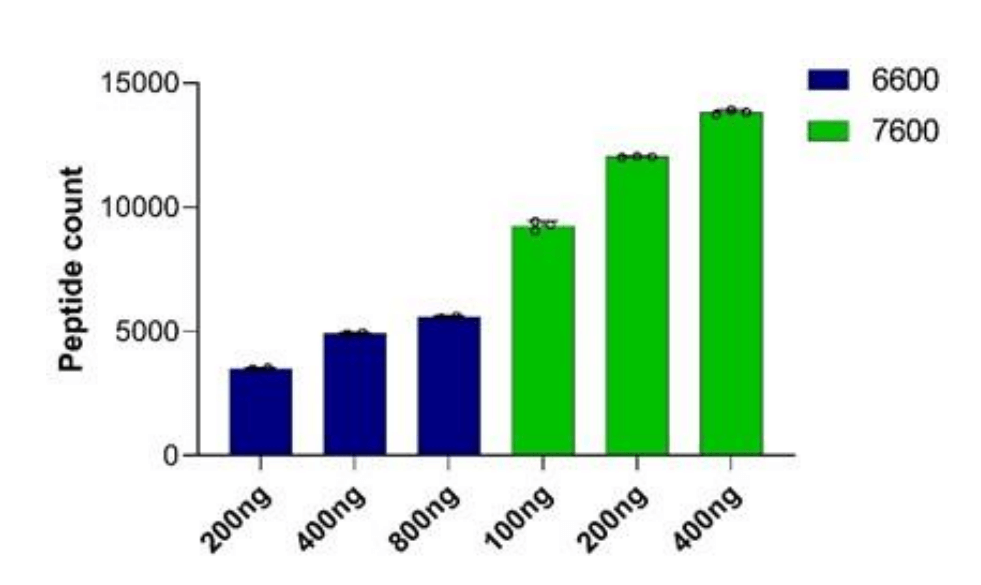 Click to enlarge
Click to enlarge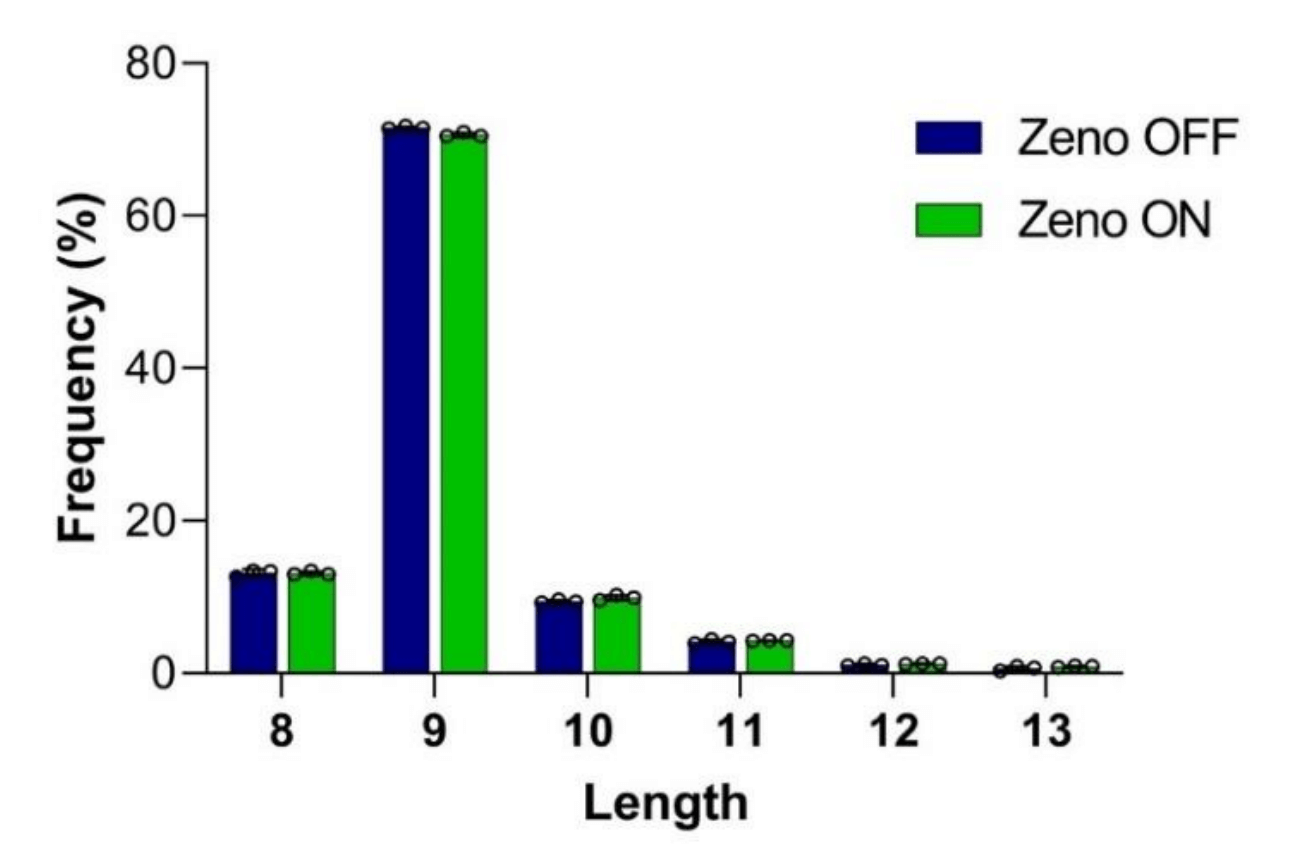 Click to enlarge
Click to enlarge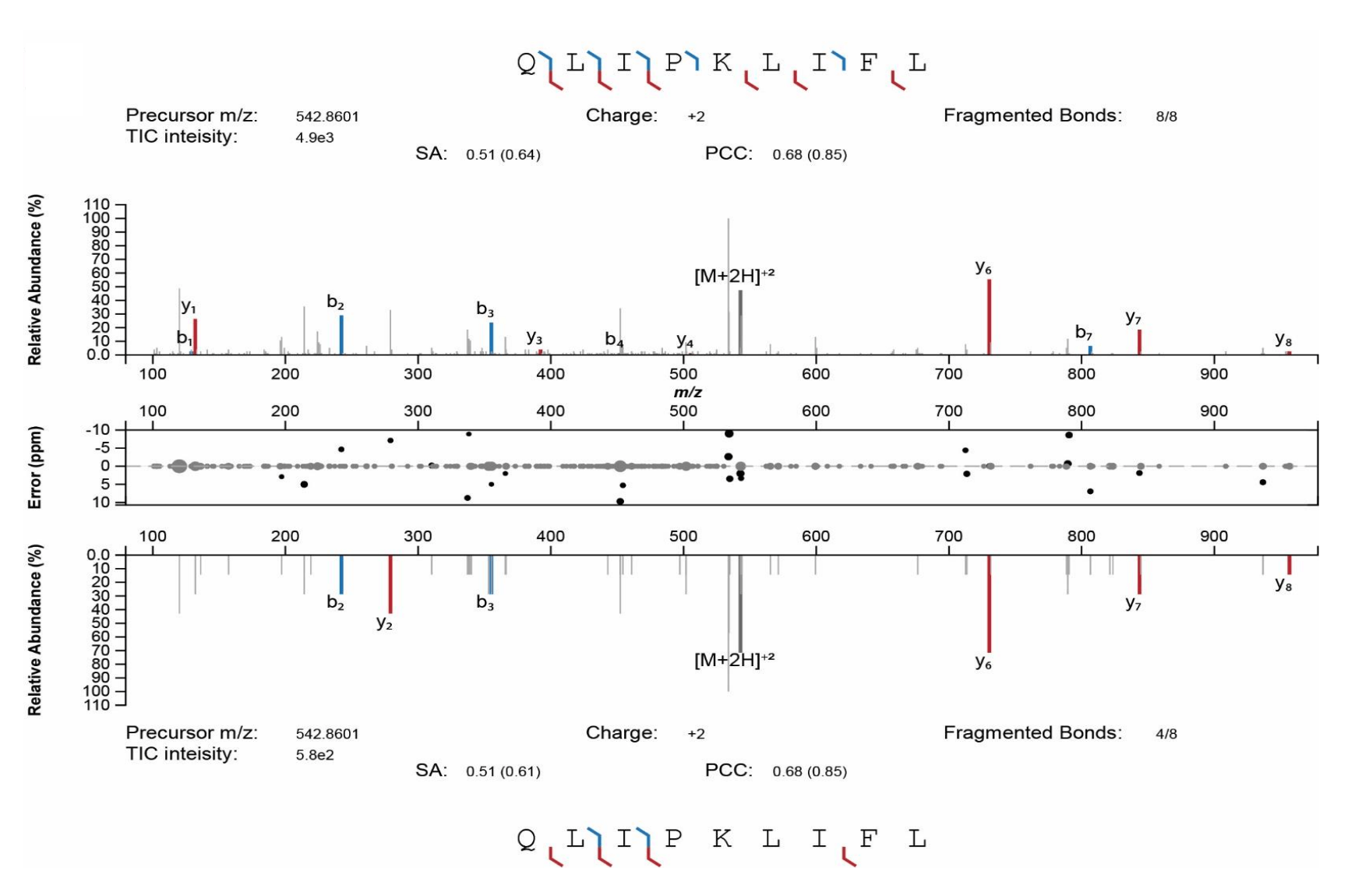 Click to enlarge
Click to enlarge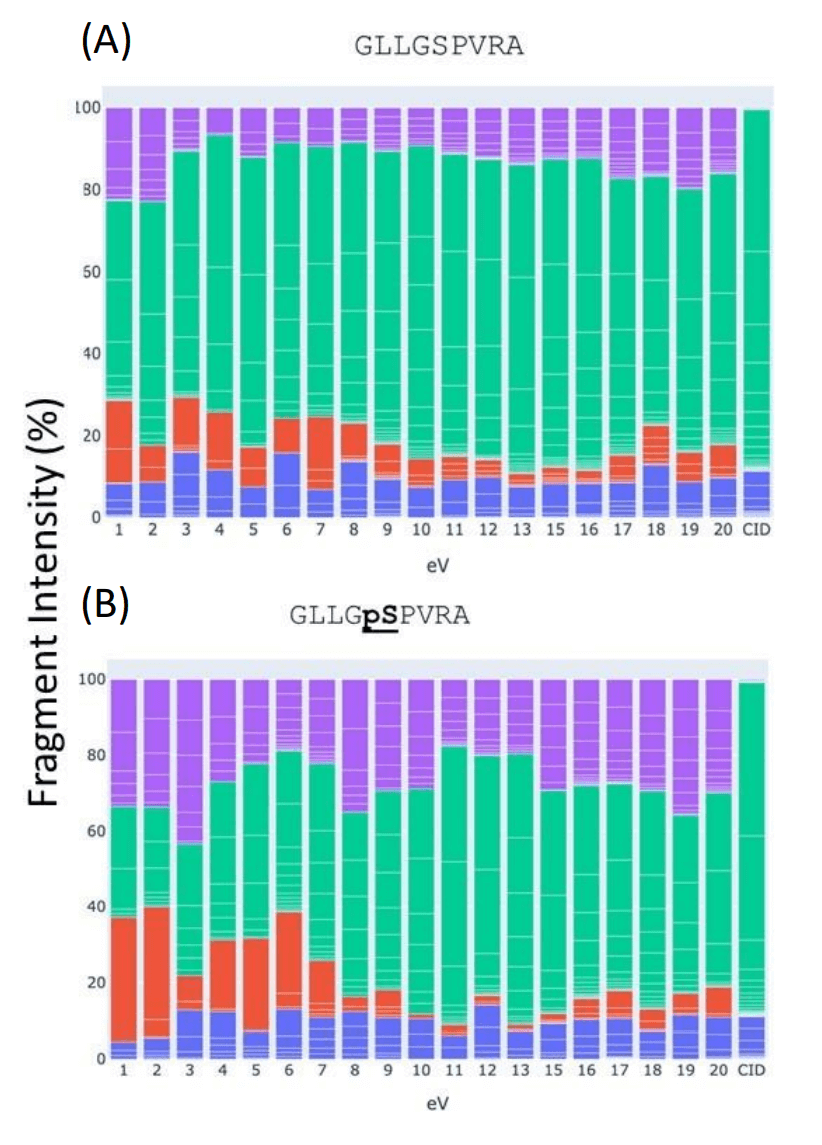 Click to enlarge
Click to enlarge Click to enlarge
Click to enlarge